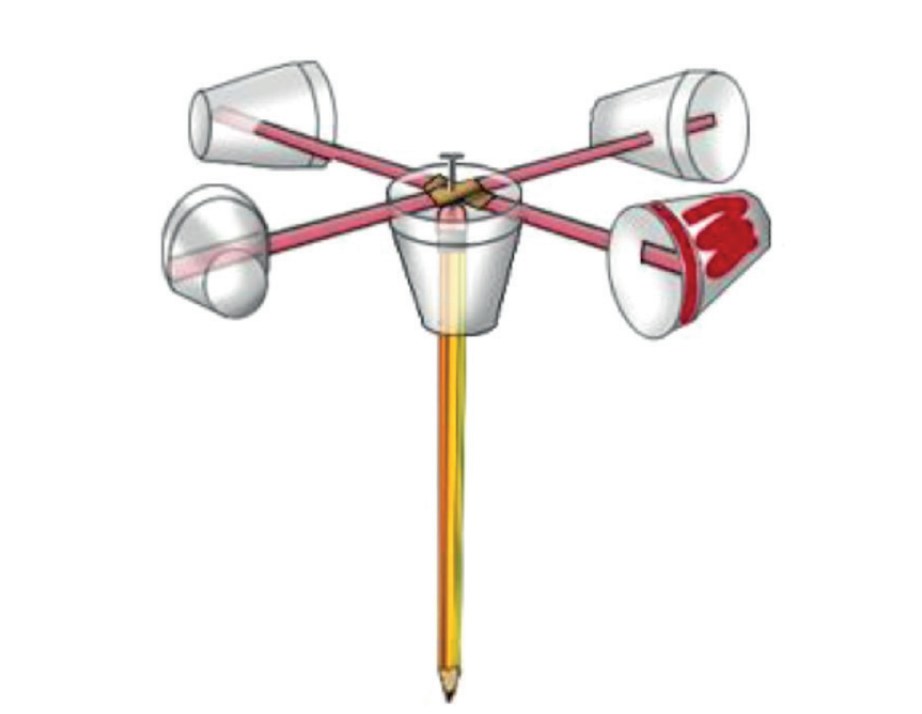



pencil with rubber at the end, five 1 dcl plastic cups, pin (or small clove), straws/sticks, hot pistol, hair dryer (one is enough for a whole class), PET bottle, sand, stop watches
Once pupils have created a wind direction indicator, their next task will be to wonder if they can measure winds speed. The teacher leaves room for the pupils to make a suggestion as they might think about their suggestions. A more complicated option is if the teacher does not provide the material and pupils themselves have to design the necessary material and procedure (tool) itself as well.
After making the proposals, the teacher discusses with pupils how to realize their ideas. In this task, it is important to explain the principle of measuring wind speed. Pupils should try to quantify the wind speed.
In case they have a problem with this step, the teacher can provide them with various aids and materials to create a wind speed measuring device. The simplest option is to provide them with a proposal that they only implement. However, it is important to always give pupils room to think and propose their own designs. In this way, the teacher “forces” the pupils to think about the problem and look for solutions.

To create an anemometer they will need a pencil with a rubber, five 1 dcl plastic cups, a pin (or a small nail), straws. It is important to ensure that the straws on the pencil can rotate. They mark one cup. The pencil should be fixed so that the anemometer does not fall when the wind is stronger (they can use a PET bottle filled with sand again). Likewise, cups on the straw/stick should be attached using the hot pistol.
The functionality of anemometers can be tested e.g. using a hairdryer. In the case they do not turn around, or if there is another problem with its functionality, the teacher asks the pupils to try to identify the problem (why it does not work) and then to alarm their anemometer to work.
Wind speed will be measured by counting the number of revolutions during the agreed time period. Therefore, it was necessary to mark one cup. Pupils can examine the number of revolutions at the same time under different conditions (hair dryer at 1st gear, 2nd gear, etc.) and environment (e.g. before school). At the end of the activity they will draw a conclusion from their research.